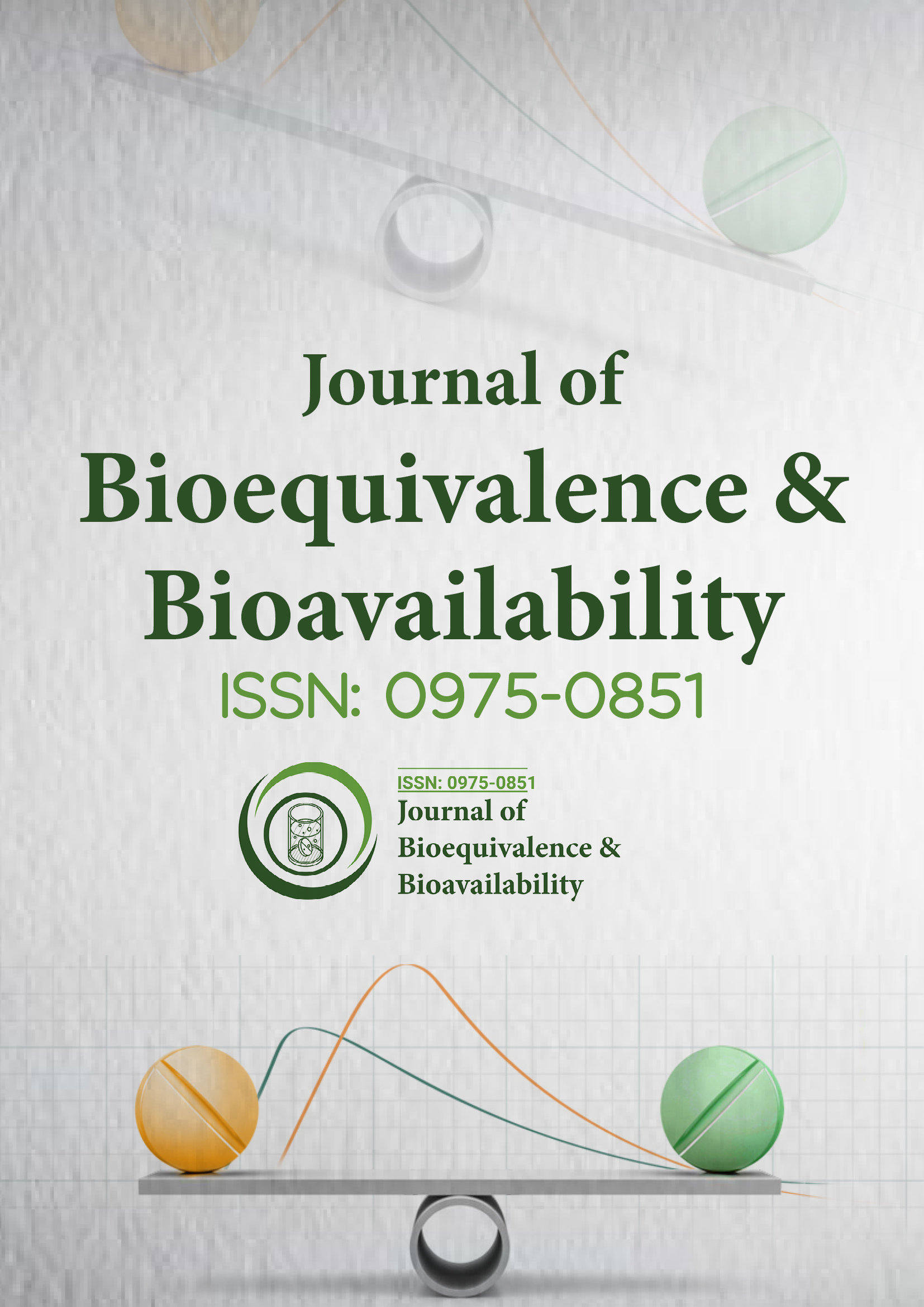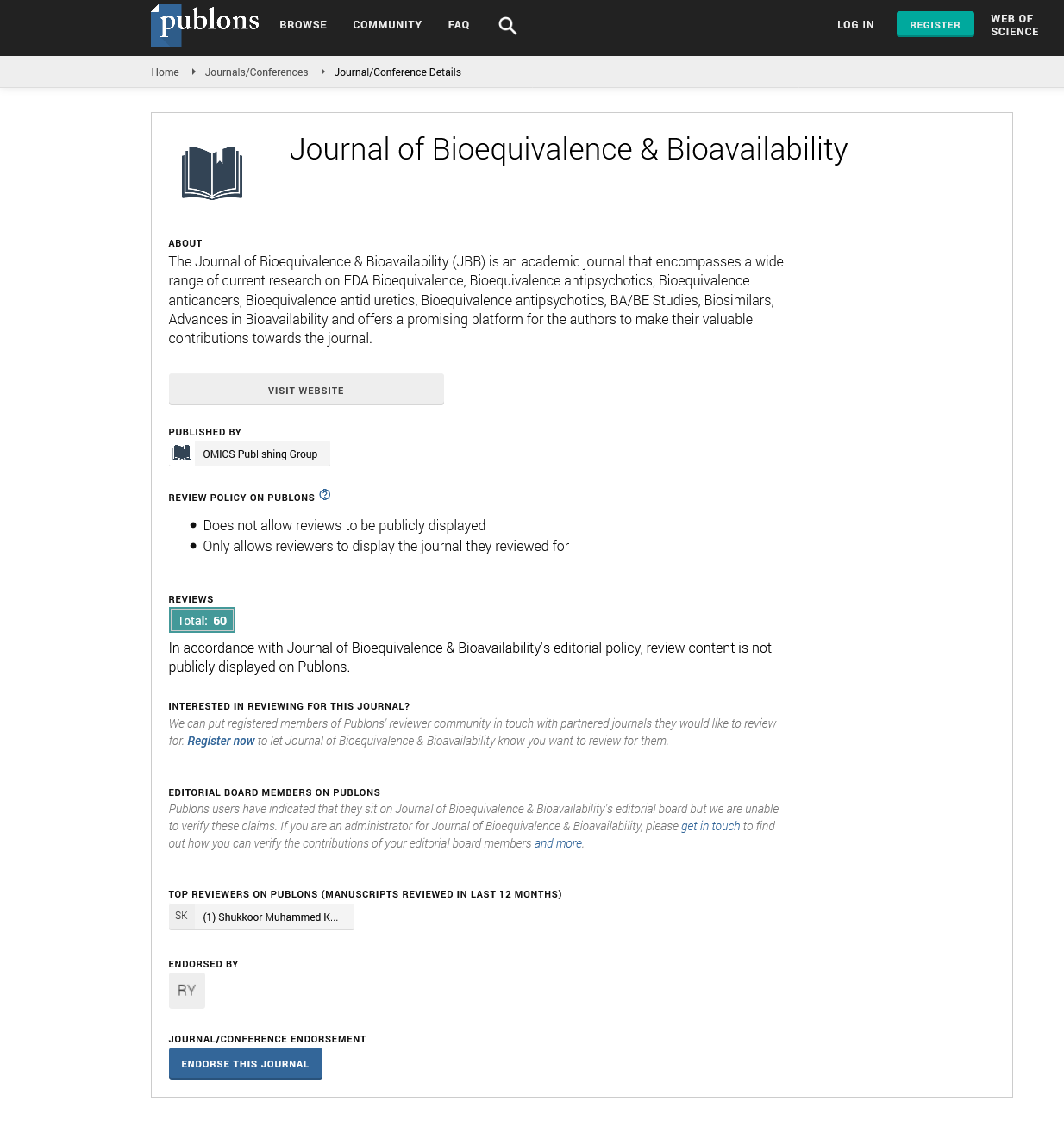Indexed In
- Academic Journals Database
- Open J Gate
- Genamics JournalSeek
- Academic Keys
- JournalTOCs
- China National Knowledge Infrastructure (CNKI)
- CiteFactor
- Scimago
- Ulrich's Periodicals Directory
- Electronic Journals Library
- RefSeek
- Hamdard University
- EBSCO A-Z
- OCLC- WorldCat
- SWB online catalog
- Virtual Library of Biology (vifabio)
- Publons
- MIAR
- University Grants Commission
- Geneva Foundation for Medical Education and Research
- Euro Pub
- Google Scholar
Useful Links
Share This Page
Journal Flyer

Open Access Journals
- Agri and Aquaculture
- Biochemistry
- Bioinformatics & Systems Biology
- Business & Management
- Chemistry
- Clinical Sciences
- Engineering
- Food & Nutrition
- General Science
- Genetics & Molecular Biology
- Immunology & Microbiology
- Medical Sciences
- Neuroscience & Psychology
- Nursing & Health Care
- Pharmaceutical Sciences
Opinion Article - (2024) Volume 16, Issue 6
Pharmacogenomics and Drug-Drug Interactions in Bioequivalence Studies
Sansa James*Received: 28-Nov-2024, Manuscript No. JBB-24-28087; Editor assigned: 02-Dec-2024, Pre QC No. JBB-24-28087 (PQ); Reviewed: 16-Dec-2024, QC No. JBB-24-28087; Revised: 23-Dec-2024, Manuscript No. JBB-24-28087 (R); Published: 30-Dec-2024, DOI: 10.35248/0975-0851.24.16.615
Description
Bioequivalence (BE) studies are integral to the approval of generic drugs. They ensure that a generic formulation is therapeutically equivalent to its Reference-Listed Drug (RLD), with respect to key parameters like Pharmacokinetics (PK) and Pharmacodynamics (PD). Traditionally, bioequivalence assessments have focused on pharmacokinetic parameters, such as plasma drug concentrations, Area Under the Curve (AUC), and maximum concentration (Cmax), to determine whether a generic drug is absorbed and metabolized in the same manner as the reference drug. However, Drug-Drug Interactions (DDIs) present a critical challenge in bioequivalence studies that is often overlooked in traditional testing protocols.
Understanding drug-drug interactions
Drug-drug interactions occur when two or more drugs influence each other’s pharmacokinetics or pharmacodynamics. These interactions may occur at several points during the drug absorption, distribution, metabolism, and elimination processes. The most common interactions are metabolic, where one drug affects the metabolism of another, leading to altered plasma levels and therapeutic outcomes. DDIs have the potential to alter the expected therapeutic effect of a drug. For instance, one drug may increase or decrease the plasma concentration of another, leading to either toxicity or subtherapeutic effects. This is particularly concerning for drugs with a narrow therapeutic index, where even small changes in drug concentrations can result in significant safety or efficacy issues. Therefore, evaluating DDIs in bioequivalence studies is essential, as interactions between drugs could mask or exacerbate differences in the pharmacokinetic profiles of a generic drug compared to its reference.
Drug metabolism and the role of cytochrome p450 enzymes
Drug metabolism is a key area where drug-drug interactions often arise. The cytochrome P450 enzyme system is responsible for the metabolism of a wide variety of drugs, and alterations in the activity of these enzymes can have profound effects on the pharmacokinetics of drugs. Enzyme inhibition and induction are common mechanisms of DDIs that can lead to clinically significant alterations in drug levels.
Enzyme inhibition occurs when a drug inhibits the activity of one or more CYP enzymes, leading to decreased metabolism and increased plasma concentrations of other drugs. For example, drugs such as ketoconazole, grapefruit juice, and ritonavir are known inhibitors of CYP3A4, a major enzyme involved in the metabolism of several drugs. When these inhibitors are taken with drugs metabolized by CYP3A4, they can lead to elevated drug levels, increasing the risk of adverse effects or toxicity. On the other hand, enzyme induction occurs when a drug increases the activity of a particular CYP enzyme, leading to faster metabolism of other drugs and potentially reducing their efficacy.
When assessing bioequivalence, it is critical to consider how a generic drug may interact with drugs that are known inhibitors or inducers of specific enzymes. Without considering these interactions, a bioequivalence study may overlook significant differences between the generic and reference drugs in terms of drug metabolism, potentially compromising patient safety and therapeutic outcomes.
Special populations and drug-drug interactions
The impact of drug-drug interactions on bioequivalence becomes even more significant when considering special populations, such as the elderly, patients with comorbid conditions, and those with polypharmacy regimens. These populations are more likely to be taking multiple medications, increasing the potential for DDIs. Moreover, changes in hepatic function, renal function, and enzyme activity in these populations can further exacerbate the risks of adverse interactions.
Conclusion
Drug-drug interactions are a critical yet often overlooked factor in bioequivalence studies. While traditional bioequivalence assessments focus on pharmacokinetic parameters such as plasma concentrations, Cmax, and AUC, DDIs have the potential to significantly impact the therapeutic outcomes of generic drugs. Evaluating DDIs is especially important in special populations who may be at greater risk for adverse interactions.Given the complexity of drug metabolism and the ever-increasing number of patients using multiple medications, bioequivalence studies must incorporate strategies to evaluate the impact of drug-drug interactions.Citation: James S (2024). Pharmacogenomics and Drug-Drug Interactions in Bioequivalence Studies. J Bioequiv Availab. 16:615.
Copyright: © 2024 James S. This is an open-access article distributed under the terms of the Creative Commons Attribution License, which permits unrestricted use, distribution, and reproduction in any medium, provided the original author and source are credited.

